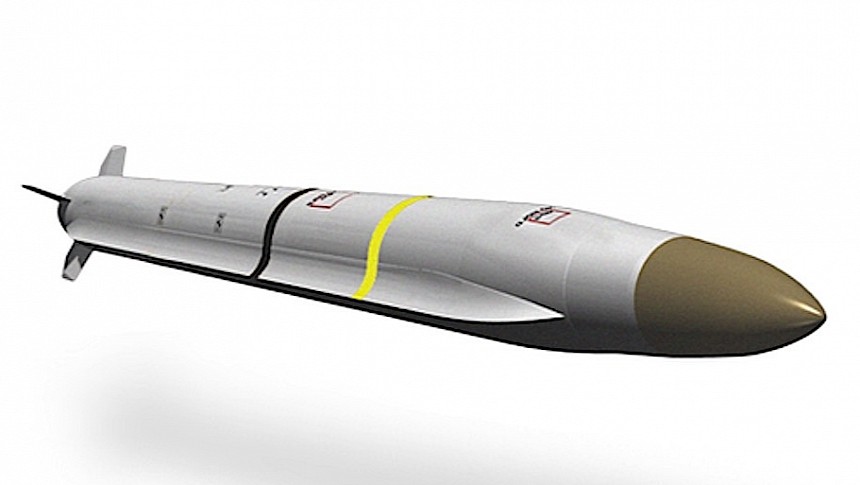The war in Ukraine has prompted investments in the defense industry the likes of which the world has probably not seen since the Second World War. Every single country with a solid military-industrial complex is presently not only arming itself but also spending billions on new weapons systems for future wars.
America is of course at the forefront of this push, but of all its many military branches the U.S. Air Force (USAF) clearly stands out as the champion of spending and re-arming.
From the modernization of the current airplane fleet to the research of new fighters, bombers, and weapons, the USAF seems determined to be unbeatable should the worst come to pass and war on a larger scale erupt.
The latest development on the weapons front concerns a new Stand-in Attack Weapon (SIAW) the USAF plans to have made and operational by the year 2026. A weapon that saw the Air Force award a $705 million contract to Northrop Grumman this week for the development of prototypes and a limited number of flight tests.
The Stand-In Attack Weapon is technically a missile that can be fired from the air and hit targets on the ground, from a far enough distance to allow its operators to escape both the weapon's effects and enemy fire.
Its main goal will be to defeat "rapidly relocatable targets", meaning anything from command and control posts, missile launchers, jamming systems, or anything an enemy might use to support its main forces.
The exact details of the SIAW have not been announced, but we do know it will likely be an evolution of the AGM-88 HARM. First fired in the early 1980s, it goes after electronic transmissions from enemy targets to blow them off the ground. The missile has been used extensively since its creation by the Navy, Marine Corps, and USAF, including during Operation Desert Storm and Iraqi Freedom.
Fired from airplanes, the missile can reach distances as large as 186 miles (300 km), depending on version, flying at speeds that can reach Mach 2.9 (2,225 mph/3,581 kph).
The SIAW will build on the success of the HARM, but it will be built with an open architecture as to allow for the deployment of system upgrades. Northrop Grumman has three years to develop the missile. It will have to build prototypes for at least four guided flight tests, and come up with all the assets needed to put it through its paces.
It's not clear at this point how much a single SIAW will end up costing. For reference, every time a HARM is fired anywhere between $280,000 and $800,000 (for the AGM-88E AARGM) go up in smoke and flames along with enemy assets.
From the modernization of the current airplane fleet to the research of new fighters, bombers, and weapons, the USAF seems determined to be unbeatable should the worst come to pass and war on a larger scale erupt.
The latest development on the weapons front concerns a new Stand-in Attack Weapon (SIAW) the USAF plans to have made and operational by the year 2026. A weapon that saw the Air Force award a $705 million contract to Northrop Grumman this week for the development of prototypes and a limited number of flight tests.
The Stand-In Attack Weapon is technically a missile that can be fired from the air and hit targets on the ground, from a far enough distance to allow its operators to escape both the weapon's effects and enemy fire.
Its main goal will be to defeat "rapidly relocatable targets", meaning anything from command and control posts, missile launchers, jamming systems, or anything an enemy might use to support its main forces.
The exact details of the SIAW have not been announced, but we do know it will likely be an evolution of the AGM-88 HARM. First fired in the early 1980s, it goes after electronic transmissions from enemy targets to blow them off the ground. The missile has been used extensively since its creation by the Navy, Marine Corps, and USAF, including during Operation Desert Storm and Iraqi Freedom.
Fired from airplanes, the missile can reach distances as large as 186 miles (300 km), depending on version, flying at speeds that can reach Mach 2.9 (2,225 mph/3,581 kph).
The SIAW will build on the success of the HARM, but it will be built with an open architecture as to allow for the deployment of system upgrades. Northrop Grumman has three years to develop the missile. It will have to build prototypes for at least four guided flight tests, and come up with all the assets needed to put it through its paces.
It's not clear at this point how much a single SIAW will end up costing. For reference, every time a HARM is fired anywhere between $280,000 and $800,000 (for the AGM-88E AARGM) go up in smoke and flames along with enemy assets.






